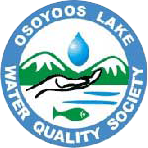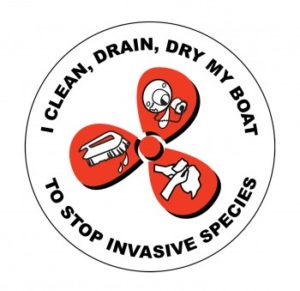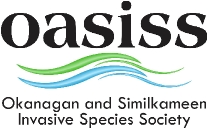Fishing in Osoyoos Lake
What kinds of fish are in the lake?
Black Bullhead, Black Crappie, Carp, coarse or non-game fish, Goldfish, Kokanee Salmon, Lake Whitefish, Largemouth Bass, Largescale Sucker, Mountain Whitefish, Northern Pikeminnow (formerly N. Squawfish), Pumpkinseed Sunfish, Rainbow Trout, Smallmouth Bass, Sockeye Salmon, Steelhead and Yellow Perch.
Because fish, and particularly salmon, are in the middle of the wildlife food chain, they are important indicators of the health of any lake or river
Challenges facing Osoyoos Lake fish
- Loss of the natural shoreline (riparian habitat) where they lay their eggs and feed.
- Increases in water temperature caused by loss of shade due to depletion of shoreline vegetation.
- Man-made changes in water flow (e.g. docks).
- Gasoline and oil leaked into the water from boats (one drop of oil can contaminate 100 litres of water: one litre of fuel can contaminate one million litres of water!).
- Introduced species of fish such as bass, whitefish and trout competing with the indigenous species for food.
- Pollution of the water from various sources, such as agricultural runoff (fertilisers, pesticides etc), stormwater runoff, geese droppings, faulty septic tanks, human waste (swimmers etc).
- Pollution from communities further north, flowing into Osoyoos Lake from the Okanagan River. Nutrients, sediment and potentially toxic chemicals accumulate in the lake and are prevented from being flushed downstream by the Zosel Dam in Oroville.
- Depletion of creek and stream levels by upstream draw-off.
Is sport fishing allowed in Osoyoos Lake?
Yes, it is open to fishing year-round. Sport fishing in the Okanagan is administered by the government of British Columbia. All persons age 16 and over are required to have a fishing license.
Anglers must also be aware of fishing guidelines, closures, quotas, possession limits and gear restrictions. Fishing regulations/licences can be obtained from Osoyoos Shell Station, situated in west Osoyoos at the junction of Hwy 3 & Hwy 97, or you can go online to obtain a fresh water e-license at the British Columbia Ministry of Environment website.
Where’s the best place to fish?
Near the mouth of Solana Bay on the south side of Motel Row; and at the bridge on Highway 3. Spring and fall are the best times to catch rainbow trout and salmon. Bass fishing peaks in the summer.
Can you keep what you catch?
Yes, but regular fishing limits apply according to species. There is a growing trend towards ‘catch and release’, which means there is no limit to the amount of fish caught.
Are the fish okay to eat?
Yes, however consuming large quantities is not recommended because not enough is known about how Osoyoos fish are affected by pollutants in the water. Some fish from Osoyoos Lake were tested several years ago and found to contain trace amounts of mercury, similar to trace amounts found in fish throughout N. America, indicating an international concern. Usually, larger fish highest in the food chain accumulate more mercury than the small fish in Osoyoos Lake.






